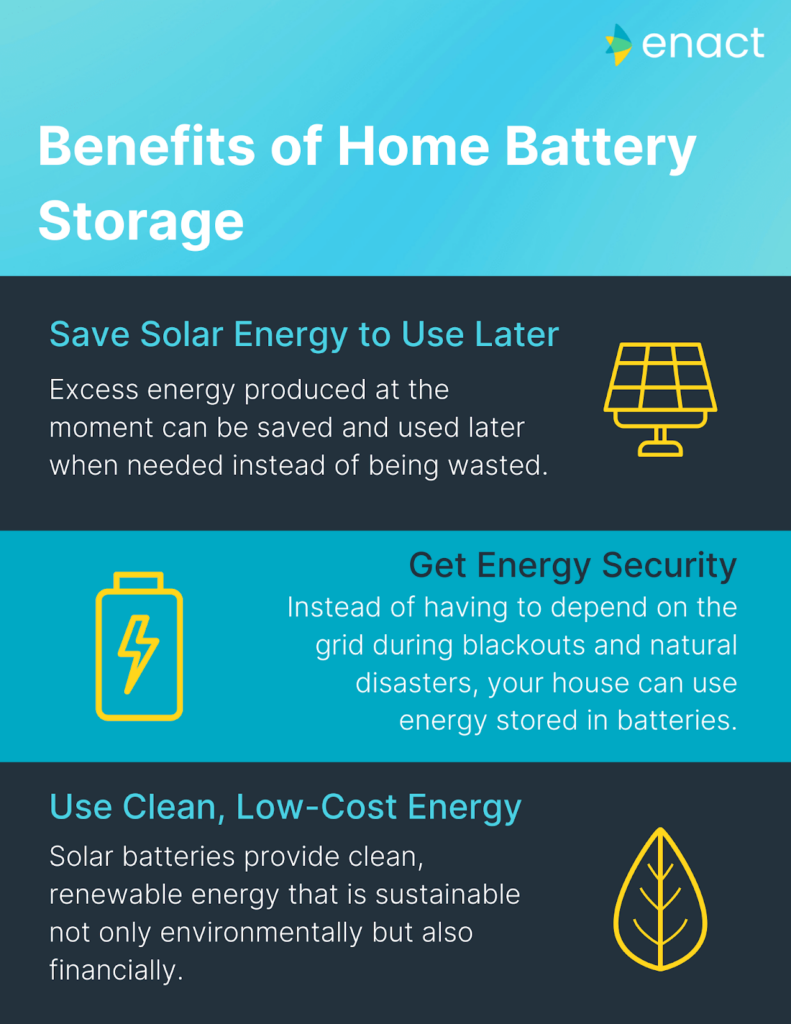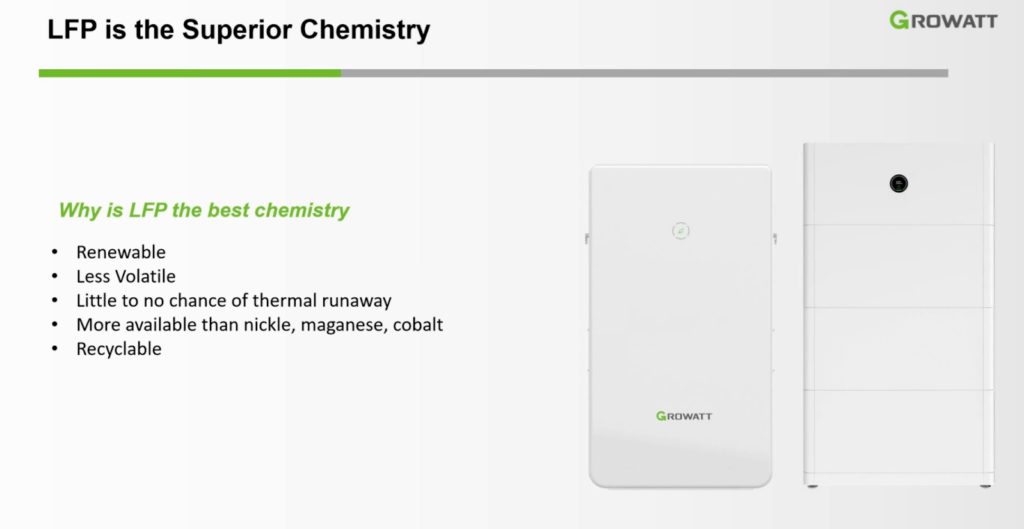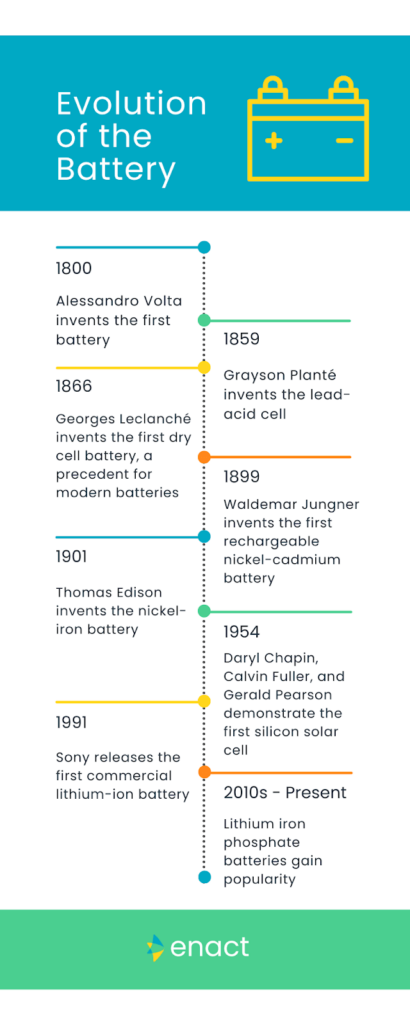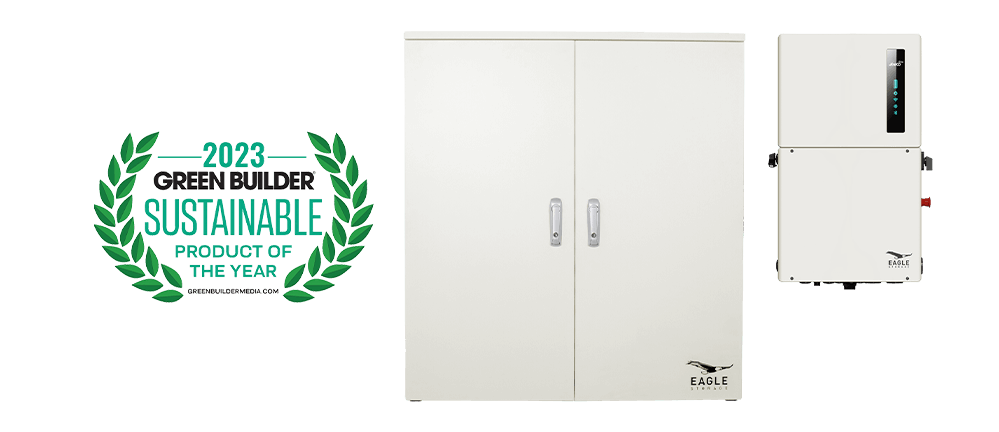The evolution of home battery storage
As the world embraces renewable energy sources there is a need for residential storage batteries. Storage batteries store unused electricity generated from your solar panels or from the electrical grid.
Homeowners can get the most out of their solar investment with solar batteries. Solar energy costs less to generate than power from the grid, batteries can help you use more clean energy and save on utilities.
It’s the best time for energy storage due to the variety of battery types, innovations and reduction in price. The latest advancements in battery technology make it even safer for your home or business.
What is a residential storage battery?
A storage battery is a device that stores energy, from the power grid or unused solar energy, for later usage. Batteries come in different sizes and capacities, this article focuses on batteries made for residential solar systems. There are also larger-scale storage batteries made for commercial applications.
A solar battery is a type of storage battery that integrates with your solar energy system and your home. There are different types of solar batteries due to the conversion of solar-generated DC electricity with your home, which uses AC electricity.

Graphic created by Arshia Roy, Marketing Intern
Why are batteries important?
Solar batteries are important because homeowners can store unused solar energy for later use, such as at night or during a blackout. Solar-generated electricity is a use it or lose it energy, what energy you don’t use gets sent to the power grid.
Day-to-day, solar batteries help homeowners rely less on the grid during high-use times of the day or at night. However, batteries can significantly help your home during power outages. For people who live in places prone to hurricanes, wildfires and blizzards — batteries can provide essential energy security.
For consumers concerned with cost — batteries are eligible for federal solar incentives and many states and local governments offer incentives or rebates.
What are batteries made of?
There are two major types of batteries on the residential market: lead-acid and lithium-ion. A subset of lithium-ion batteries includes the innovative lithium iron phosphate battery.
Lead-acid Batteries:
Lead-acid batteries have been around for decades and are commonly used in automotive and industrial applications. These batteries have low energy density — they cannot hold as much energy per kilogram of weight — and are a cost-effective choice.
Lead-acid batteries can come in multiple varieties with different applications. These batteries are relatively inexpensive and with recent innovations, can last homeowners a decent amount of time. However, lead is a toxic metal and can have negative environmental impacts if not disposed of properly.
Lithium-ion Batteries:
Lithium-ion batteries are a newer battery technology. These batteries have higher energy density and are often smaller, lighter and more efficient. Homeowners can access more stored energy from lithium-ion batteries before the battery needs to be recharged. The major drawback of lithium-ion batteries is the relatively higher consumer costs. Without proper installation, lithium-ion batteries can catch on fire.
Lithium Iron Phosphate Batteries:
Lithium iron phosphate batteries are a type of lithium-ion battery. These batteries have a longer lifespan, need little maintenance, are highly efficient and are lightweight. The best feature of lithium iron phosphate batteries is — they are safer and less combustible than other lithium ion batteries. These batteries are nontoxic to the environment with proper disposal.

Why is LFP the best battery chemistry, obtained from Growatt.
Making the perfect battery
Since Alessandro Volta’s invention of the first battery in 1800, batteries have come a long way. Today, they power our entire lives — from our remotes to our cars, and now our homes. Advancements have led to the availability of safer, more cost-effective, and efficient storage batteries for homeowners.
In the late 1890s, Swedish engineer Waldemar Jungner introduced the first rechargeable nickel-cadmium battery, which paved the way for Thomas Edison to invent the nickel-iron battery.
Edison aimed to create storage batteries for the emerging automobile industry. Although these early batteries had limitations such as leakage and short lifespans, they laid the groundwork for the subsequent development of the lithium-ion battery.
The silicon solar cell, capable of converting sunlight into electricity, was invented by Daryl Chapin, Calvin Fuller, and Gerald Pearson at Bell Labs in 1954. Initially inefficient, this invention marked a significant milestone. By the end of the decade, scientists were using solar panels to power satellites.
The Bell Labs solar cell was connected to a battery, making it the world’s first solar battery. But it would take decades of innovation to create solar batteries for homes.
Commercial development of lithium-ion batteries began in the 1990s with Sony taking the lead. Since then, lithium-ion batteries have become the most widely used battery chemistry, commonly paired with renewable energy generation.
The latest breakthrough in rechargeable storage battery technology is the lithium iron phosphate battery. This type of lithium-ion battery is environmentally friendly, offering a longer lifespan, enhanced safety against fire hazards, and lower costs. It gained rapid development in the late 2010s.
Lithium iron phosphate batteries deliver a non-toxic solution for both consumers and the environment. They provide a higher capacity for energy discharge while ensuring longevity and reduced risks.
The increasing affordability, improved efficiency, and government support propelled the widespread adoption of solar energy among households during the 2000s and 2010s. This expansion of clean energy options enabled countless Americans to save on utility costs.
One challenge faced by solar homeowners was the inability to store unused solar energy. By storing this surplus electricity, homeowners can take advantage of its lower cost per kilowatt compared to grid-supplied energy. Homeowners equipped with solar-plus-storage systems often recoup their investment in less time compared to those with solar-only setups.

Graphic created by Arshia Roy, Marketing Intern
Are batteries sustainable?
Non-renewable fuels continue to dominate the energy sector across the world due to their cheap costs. However, these fossil fuels produce unclean emissions into our atmosphere and contribute to climate change. The burning of fossil fuels contributes 87% of the world’s CO2 emissions.
Solar batteries are an innovative technology that allows homeowners to store clean energy when their solar panels can’t produce enough electricity. This allows homeowners to use more clean energy and rely on the power grid. Batteries are also financially sustainable, with prices having dropped by 97% over three decades.
Should I get a storage battery?
Getting a storage battery for your home’s solar energy system offers numerous benefits. You can maximize the utilization of your solar system and increase your energy self-sufficiency. All while using low-cost, clean energy.
Batteries store solar energy generated during the day for evenings, cloudy days or power outages. This reduces reliance on the power grid, which can save money and potentially shorten your payback period. Batteries can also offer energy security in emergencies
Consider the long-term financial benefits, increased energy independence and reduced carbon footprint that come with a storage battery. It’s an investment that not only pays for itself over time but also aligns with your commitment to renewable energy and a cleaner environment.
How to get started?
If you’re interested in adding a storage battery to your home — with or without a solar system, Enact’s energy advisors can help you. Homeowners can schedule a brief consultation with our energy advisors, who can create a custom design for your property.
Enact coordinates the entire process from our free custom quotes to the installation and monitoring system. Customers who use Enact have access to a wide marketplace of solar panel and storage battery products — beyond what local installers often carry.
To learn more, homeowners without a solar system can get a free quote here. Homeowners with an existing solar system can receive a free quote here. Businesses can use this link for commercial-centered service.
Written by David Bartle, Marketing Associate



